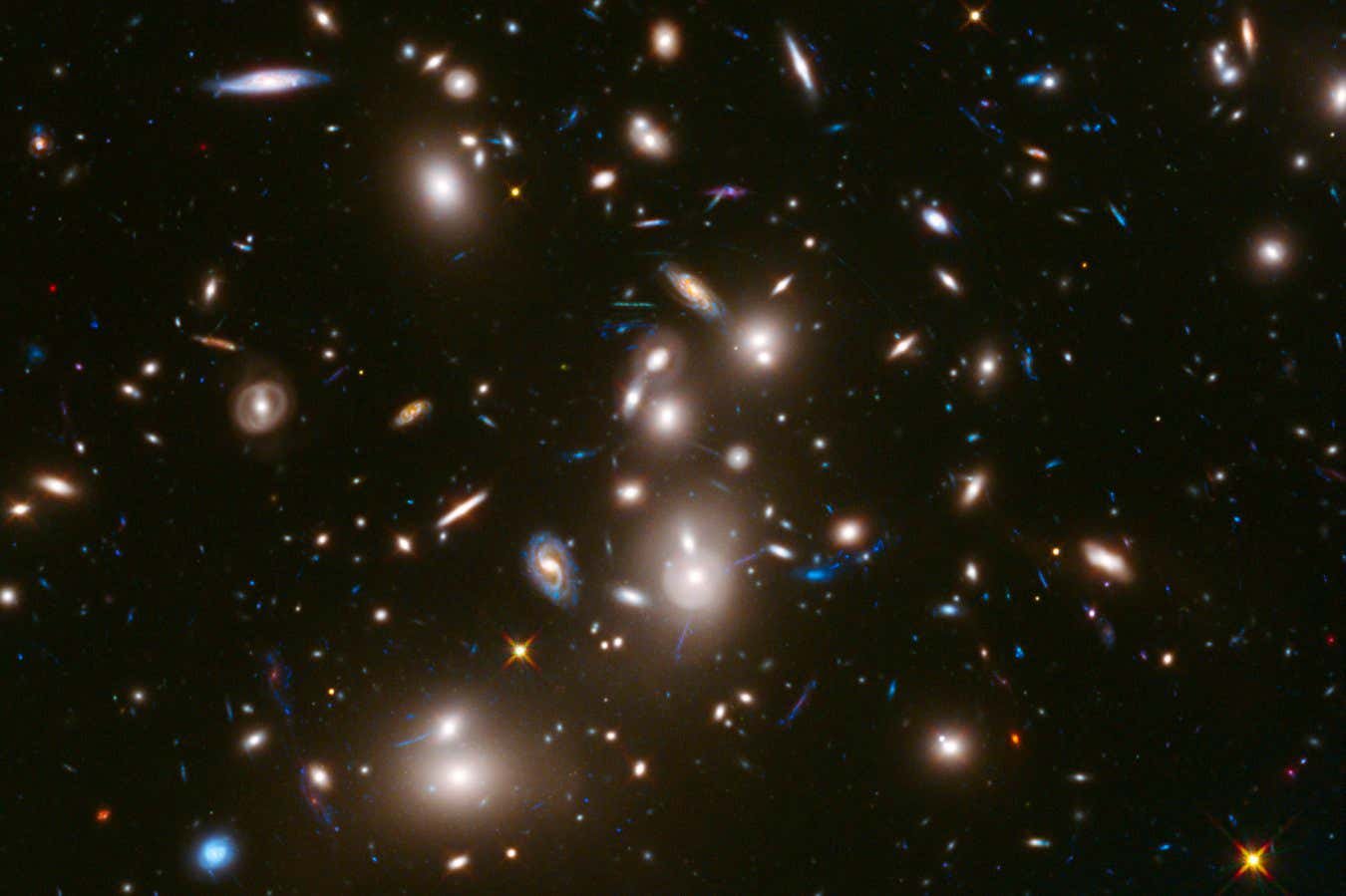
Abell 2744, the galaxy cluster where AMORE6 was spotted
NASA, ESA, Jennifer Lotz, Matt Mountain, Anton M. Koekemoer, HFF Team (STScI)
A galaxy marooned in an empty region of the universe appears to be unexpectedly full of primordial stars. This could give astronomers their first glimpse of a kind of stellar object thought to have formed shortly after the universe’s first moments and which has never been directly observed.
Despite being able to peer back to near the beginning of the universe with the James Webb Space Telescope (JWST), astronomers have struggled to definitively find evidence of the first stars. Known as population III stars, these are giant balls of mostly hydrogen that would have formed in the early universe. Being the first stars, they would have almost none of the heavier elements that are produced when stars die and explode.
While there have been hints of this kind of star, it has been difficult to find conclusive evidence of them in the early universe, as galaxies appear to be contaminated with heavier elements relatively soon after the big bang, in just a few hundred million years.
Now, Takahiro Morishita at the California Institute of Technology and his colleagues have found a galaxy made up almost entirely of hydrogen, a sign of population III stars. But the galaxy exists much later than expected for one containing such stars, around a billion years after the beginning of the universe.
Called AMORE6, it was originally spotted in a galaxy cluster known as Abell2744. Morishita and his team then measured the light coming from AMORE6 with JWST and found that a common oxygen ion was entirely absent. This means that the galaxy can have no more than 0.2 per cent of the oxygen found in our own sun, implying it is particularly uncontaminated by heavier elements.
As the universe grows older, it becomes increasingly unlikely to contain pristine galaxies of this sort. In the JWST images, AMORE6 appears to be relatively isolated, which may be the reason why it is so pristine, Morishita suggests. “That isolation means that this galaxy might be in an area that didn’t have enough gas to trigger star formation earlier. That means that this galaxy might be a late bloomer in one sense,” he says.
“If the results are confirmed, it’s really remarkable, because typically we don’t expect to find such pristine galaxy environments so late in the development of the universe,” says Fabio Pacucci at the Harvard-Smithsonian Center for Astrophysics in Massachusetts.
It also has implications for our ability to observe “direct collapse” black holes, which form from huge clouds of pristine gas rather than the typical route of an imploding star. Although these have been predicted by astronomers, they have never been conclusively seen forming, in part because pristine gas was only thought to be available for this perhaps up to 100 million years after the big bang, which is too early for us to detect them. But if pristine gas can survive much longer, then this might dramatically increase our chances of seeing one, says Pacucci.
Experience the astronomical highlights of Chile. Visit some of the world’s most technologically advanced observatories and stargaze beneath some of the clearest skies on earth. Topics:
The world capital of astronomy: Chile




